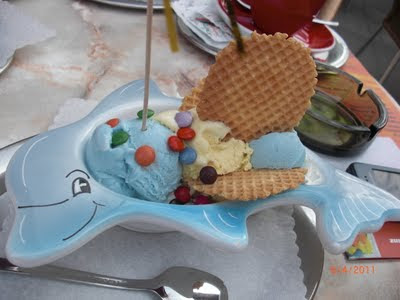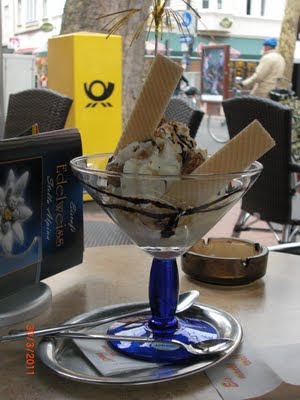Brazo de Mercedes. Photo by yoppy
Brazo de Mercedes is a creme filled roll cake with meringue. It is just like a swiss roll. Swiss roll or jelly roll is a type of sponge cake roll. The thin cake is made of eggs, flour and sugar and baked in a very shallow rectangular baking tray, called a sheet pan. The cake is removed from the pan and spread with jam or buttercream, rolled up, and served in circular slices.
This is a sweet roll cake commonly store bought in the Philippines. One of my favorite cakes besides mocha cake.
Ingredients for the Filling:
5 cups milk
1 cup sugar
Procedure:
1. In a saucepan, simmer milk over low heat until reduced (approximately half the initial amount).
2. Add sugar, butter and vanilla extract, stirring all the while. Remove from heat.
3. Beat egg yolks in mixing bowl. Gradually add milk mixture by spoonfuls, beating all the while. Stir well to avoid curdling.
4. Add cashew nuts and continue cooking entire mixture over low heat, stirring constantly, until mixture has consistency of a paste. Set aside.
10 egg whites
1 cup sugar
1 teaspoon vanilla extract
Procedure:
1. Preheat oven to 400deg F or 200 deg C.
2. Beat egg whites until stiff.
3. Gradually add 1 cup sugar, beating continuously. Stir in vanilla.
4. Line large cookie sheet with parchment paper greased with butter and flour.
5. Spread meringue on top. Bake until brown.
6. Spread filling evenly on top of meringue and roll into a log. Brush with butter and put again in the oven until brown.






